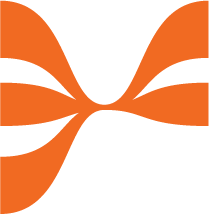(Author’s note: This is the third in a series of blog posts elaborating on the first post titled The Commodity Trap – Six Ways Brands Can Succeed in a Sea of Sameness. It follows the second post in the series, If You Can't Be Different, Be More Relevant.)
The Commodity Trap
The biggest marketing challenge of our time is the relentless commoditization of virtually every category of business. From cereal to computers to cars, intense competition has resulted in pervasive product parity. Awash in a sea of sameness, brands can become “adrift” without a difference. This series of posts presents a proven strategy for brands to get on course, achieve differentiation, and bust out of the commodity trap.
Get There First With Human Truths
Human truths are like new lands. Brands that stake claim to unoccupied territory can own it. Being first is a kind of difference, even when others could have claimed it first, and it guards against competitive trespassers.
And it’s a human truth that we all have universal needs. Just ask Maslow. His famous “Hierarchy of Needs” could reveal unoccupied ground that can anchor a differentiating brand strategy with significant growth potential. Essentially, brands can annex “need”-states.
Consider these universal needs as possible “doors in” to a brand difference.
Maslow’s Hierarchy of Needs (simplified)
(Source: Wikipedia)
EXAMPLES OF BRANDS THAT GOT THERE FIRST (from the top-down)
Self-Actualization (Brand Examples)
Nike got there first with “Just Do It,” differentiating the brand by identifying with the Self-Actualization need to achieve one’s full (physical fitness) potential. Of course, another athletic footwear brand could have claimed the “Just Do It” ground. But, since Nike got there first, it has broken out of the commodity trap with a sustained difference for decades.
More recently, in 2020, in the United States, there was a disconnect between America’s love of Black culture and the mistreatment of Black people in the wake of George Floyd’s death. While many brands remained silent, Beats by Dre reaffirmed its stance that fame and fortune do not make anyone more or less human. With the film You Love Me, Beats by Dre got to the unclaimed ground of celebrating the creativity and inspiration of Black culture first and has built sustainable brand differentiation there.
Esteem (Brand Examples)
Dove got there first with “Real Beauty” addressing the Esteem needs of the next generation.
To advance racial equity in the beauty industry beyond posting a “black square,” Sephora got there first with Black Beauty is Beauty by celebrating the Black traditions and inventions that started many beauty trends we know today. To make a longer-term impact on algorithms for years to come, they managed Google search results to show more images of Black women and men.
Belonging and Love (Brand Examples)
MasterCard’s “Priceless” got there first by staking claim to the universal human need for Belonging and Love, celebrating intimate moments. (A current MasterCard Executive said it well on LinkedIn.).
Among the many spaces to stay in accommodations, Airbnb got there first to be the place where you belong with their Belong Anywhere rebrand in 2013. That became the company’s compass for years to come, from the We Accept Superbowl Ad in 2016 to their Live and Work Anywhere remote working program today.
Safety and Security (Brand Examples)
Allstate got there first with “You’re In Good Hands,” identifying with Safety and Security needs.
In 2022, amidst the privacy-invading habits of other large tech companies like Meta and Google, Apple was first to raise awareness of the tracking and data collection that happens to people every day by promoting Privacy on iPhone.
Physiological (Brand Examples)
It can even work with Physiological needs. Snickers got there first with “You’re Not Yourself When You’re Hungry”, differentiating a brand of candy with the physiological & psychological need for food.
In recent years, Liquid Death got their first in making the human physiological need to prevent dehydration cool and exciting through funny and irreverent branding with the Deadliest Stuff on Earth (formerly known as water).
DIY STEPS FOR GETTING THERE FIRST
- Inventory all relevant human truths/needs at play in the category
- Map out occupied and unoccupied ground
- Use truths/needs to explore ownable territories
- Name and define the territory to be claimed
- Stake claim of ownership by publicly identifying the brand with the truth/need
- Find ways to connect human truths with the truth of the brand’s values and convictions
Getting there first usually starts with a fresh take on universal human truths/needs, particularly those currently being ignored by competitors. Often, this commodity trap buster becomes the driving focus of company operations and culture.
So, the next time you hear “that’s not ownable”, interpret it as an opportunity, not a problem. The question is not could anybody claim something? It should be what can be claimed first? The answer may represent an unclaimed territory that’s waiting to be conquered. Just get there first!
A Final Human Truth
Most people are reticent to do things first because it’s risky to do something that no one else has done. And yet, to achieve sustained differentiation in the face of commoditization, not taking the risk of doing something first may be the biggest risk of all.
 Earl Cox is Senior Brand Strategy Consultant for the Brand Federation and Chief Strategy Officer Emeritus, The Martin Agency.
Earl Cox is Senior Brand Strategy Consultant for the Brand Federation and Chief Strategy Officer Emeritus, The Martin Agency.
Ready to talk about brand strategy? Contact us at info@brandfederation.com.

